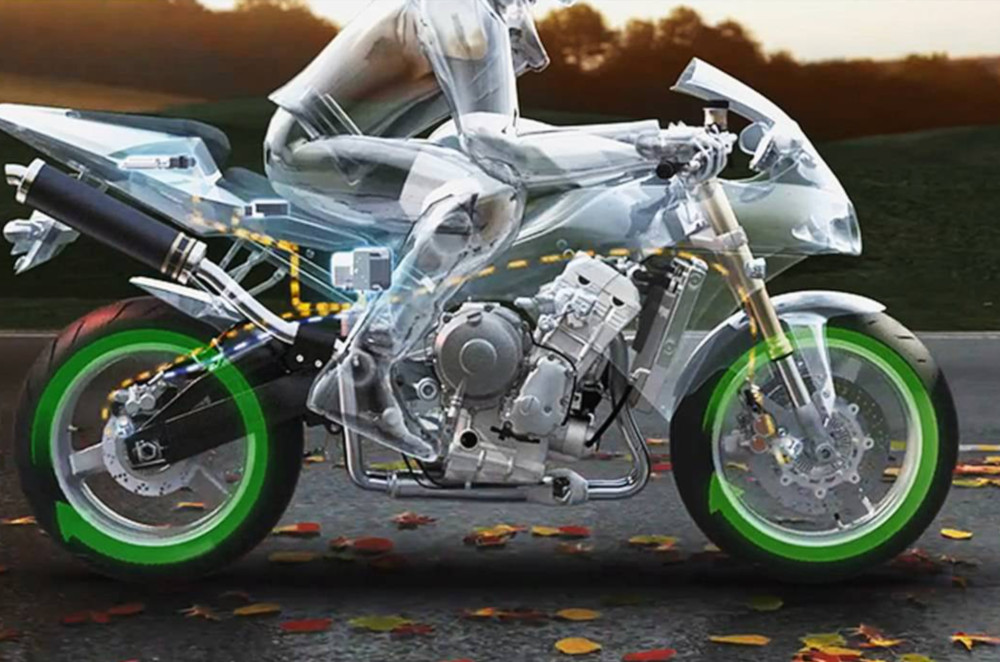As we delve into the realm of motorcycle safety features review 2025, we are presented with a fascinating journey through the evolution of safety technology in motorcycles. This captivating exploration will shed light on the importance of advanced safety features and the current trends shaping the future of motorcycle safety.
Overview of Motorcycle Safety Features in 2025

Motorcycle safety features have come a long way over the years, evolving to provide riders with better protection on the road. From basic helmet laws to advanced technological innovations, the focus on safety has been a key priority in the motorcycle industry.
Advanced safety features in motorcycles are crucial in reducing the risk of accidents and minimizing the severity of injuries in case of a crash. These features not only protect the rider but also enhance overall road safety for everyone.
Current Trends in Motorcycle Safety Technology
- Adaptive Cruise Control: This technology allows motorcycles to automatically adjust their speed to maintain a safe distance from other vehicles on the road, reducing the risk of rear-end collisions.
- Anti-lock Braking Systems (ABS): ABS helps prevent wheel lock-up during sudden braking, allowing the rider to maintain control and stability on slippery or uneven surfaces.
- Electronic Stability Control (ESC): ESC uses sensors to detect and correct loss of traction, helping riders maintain control in challenging riding conditions.
- Helmet-mounted Displays: These displays provide riders with real-time information such as speed, navigation, and alerts, without the need to take their eyes off the road.
- Collision Warning Systems: These systems alert riders of potential collisions with other vehicles or obstacles, giving them precious seconds to react and avoid accidents.
Impact of Technology on Motorcycle Safety
Technological advancements have significantly improved motorcycle safety over the years. From advanced braking systems to smart helmets, manufacturers are constantly integrating innovative features to enhance rider protection and prevent accidents.
Advanced Braking Systems
- Anti-lock braking system (ABS) technology has become standard in many modern motorcycles, preventing wheel lock-up and improving control during emergency braking.
- Cornering ABS adjusts braking force based on lean angle, enhancing stability and reducing the risk of low-side crashes.
Smart Helmets and Wearables
- Smart helmets with built-in cameras, Bluetooth connectivity, and heads-up displays provide real-time information to riders, increasing situational awareness and reducing distractions.
- Wearable airbag systems deploy upon impact, protecting the rider's head, neck, and upper body in the event of a crash.
Artificial Intelligence in Motorcycle Safety
- Collision avoidance systems use AI algorithms to detect potential hazards on the road and alert the rider to take evasive action.
- Adaptive cruise control adjusts speed based on traffic conditions, maintaining a safe distance from other vehicles automatically.
Comparison of Different Motorcycle Safety Features
Motorcycle safety features have come a long way in recent years, with advancements in technology providing riders with more options than ever before to stay safe on the road. In this section, we will compare and contrast various safety features such as ABS, traction control, and adaptive cruise control, analyzing their effectiveness in preventing accidents and evaluating the cost-benefit of investing in these advanced technologies for motorcycles.
Anti-lock Braking System (ABS)
ABS is a crucial safety feature that prevents the wheels from locking up during sudden braking, allowing the rider to maintain control and stability. This feature significantly reduces the risk of skidding and losing traction, especially in slippery road conditions.
While ABS may increase the initial cost of a motorcycle, its proven effectiveness in preventing accidents makes it a worthwhile investment for riders concerned about safety.
Traction Control
Traction control helps prevent wheel spin and loss of control by adjusting the power delivery to the wheels based on road conditions. This feature is particularly beneficial in wet or slippery conditions, where maintaining traction is essential for safe riding.
While traction control may not be as common as ABS, it offers an additional layer of safety for riders, especially those who frequently ride in challenging environments.
Adaptive Cruise Control
Adaptive cruise control is a more advanced safety feature that automatically adjusts the speed of the motorcycle to maintain a safe following distance from the vehicle ahead. By using sensors and radar technology, adaptive cruise control can help reduce the risk of rear-end collisions caused by sudden stops or changes in traffic flow.
While this feature may come at a higher cost, its potential to prevent accidents and enhance overall riding comfort makes it a valuable addition for riders seeking a more automated riding experience.Overall, each safety feature offers unique benefits and contributes to a safer riding experience.
While the initial cost of motorcycles equipped with advanced safety technologies may be higher, the potential savings in medical expenses and repair costs resulting from accidents can make investing in these features a smart decision for riders prioritizing safety on the road.
Future Trends in Motorcycle Safety Features

As we look ahead to 2025, the evolution of motorcycle safety features is expected to take a significant leap forward. With advancements in technology and an increased focus on rider safety, we anticipate several key trends that will revolutionize the way motorcycles are equipped to protect their riders.
Integration of Artificial Intelligence
One of the most exciting trends in motorcycle safety features is the integration of artificial intelligence (AI). AI-powered systems can analyze real-time data from sensors on the bike and the surrounding environment to anticipate potential hazards and assist the rider in making split-second decisions.
This technology has the potential to significantly reduce accidents and improve overall safety on the road.
Adaptive Cruise Control
Another upcoming technology that is set to revolutionize motorcycle safety is adaptive cruise control. This system uses radar and sensors to maintain a safe distance from other vehicles on the road, automatically adjusting the bike's speed to prevent collisions. By taking some of the burden off the rider in heavy traffic or on long highway stretches, adaptive cruise control can enhance safety and reduce rider fatigue.
Connectivity and IoT Integration
The integration of Internet of Things (IoT) technology in motorcycle safety systems will also play a crucial role in enhancing rider safety. By connecting the bike to other vehicles, infrastructure, and wearable devices, motorcycles can communicate real-time information about road conditions, weather, and potential hazards.
This connectivity allows for advanced warning systems and adaptive responses that can help prevent accidents before they happen.
Ending Remarks

In conclusion, the landscape of motorcycle safety features in 2025 holds promise for exciting advancements and innovations that aim to enhance rider safety. From cutting-edge technologies to the integration of IoT, the future looks bright for motorcycle enthusiasts seeking a safer riding experience.
FAQ Overview
What are some examples of innovative safety features introduced in recent motorcycle models?
Some examples include adaptive cruise control, blind spot monitoring systems, and automatic emergency braking.
How is artificial intelligence being utilized to enhance motorcycle safety?
Artificial intelligence is being used to develop predictive systems that can anticipate potential hazards on the road and assist riders in avoiding accidents.
What upcoming technologies are expected to revolutionize motorcycle safety by 2025?
Technologies such as vehicle-to-vehicle communication, smart helmets with built-in sensors, and predictive analytics are anticipated to revolutionize motorcycle safety.











